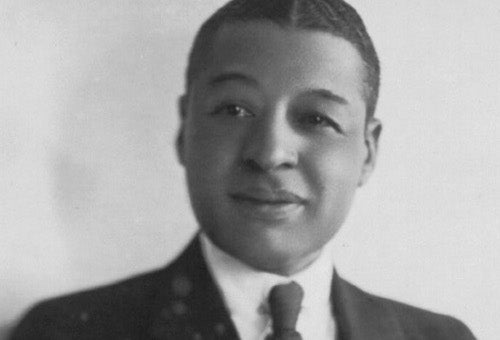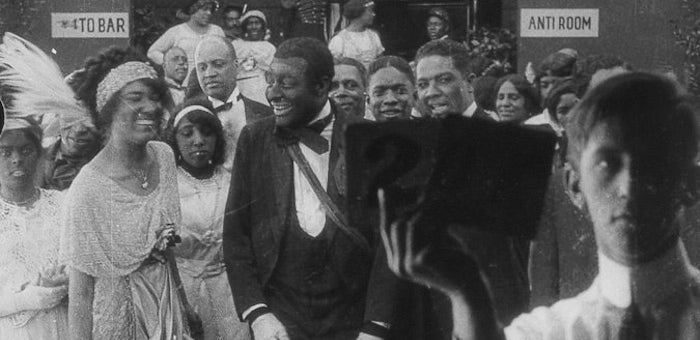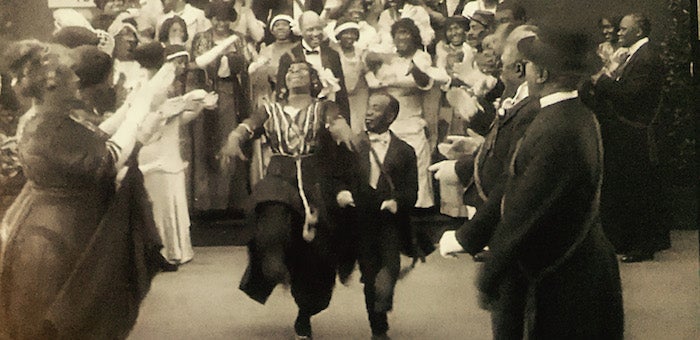
On November 8, I was one of the lucky few to attend the premiere of the rediscovered Bert Williams feature film at To Save and Project: The 12th MoMA International Festival of Film Preservation. The film has no title, but is now being called Bert Williams Lime Kiln Club Field Day (1913) because it was, in fact, never completed and didn’t have an actual release title. As a result, the film was not technically restored, as a New York Times article states, since one can’t restore that which never existed in the first place. Nevertheless, the story of this extremely important work of black film history is not only remarkable, but also an object lesson for film archives, since the film has been hiding in plain sight for decades.
Before the film screened, MoMA Associate Curator Ron Magliozzi and Preservation Officer Peter Williamson related just how that happened. They noted that the footage had been inadvertently purchased by founding Film Department curator Iris Barry in 1939 when she acquired the Biograph Film Company negatives, which included all the works of D.W. Griffith. Over the next 40 years, the seven reels of 35mm negative remained in the vaults untouched. Even after MoMA made a print of the reels in the early 1980s, so that film historians could view the footage, it was thought that the material constituted outtakes from one of the two known Bert Williams short films, Darktown Jubilee (1914).

Bert Williams was, of course, the most famous blackface comedian in vaudeville before World War I, and America’s most popular recording artist before 1920 with such signature hits as “Nobody.” W.C. Fields, who performed with Williams, famously called him "the funniest man I ever saw and the saddest man I ever knew.” As Magliozzi and Williamson demonstrated, Williams without bootblack was a devilishly handsome man, if a bit androgynous. Amazingly, Williams is the only character in blackface in Lime Kiln Club Field Day, while the rest of the huge, almost exclusively black cast appears natural and non-stereotyped. Unfortunately, since the film was never released, there are no actor credits, hence the need to spend hundreds of hours comparing frame enlargements from the film with photographs of known African American vaudevillians and other actors, in order to identify the players. So far, the staff has identified half a dozen actors, including the female lead, Odessa Warren Grey.
The film was not a Biograph production, but was produced by the Broadway theatrical impresarios Klaw & Erlanger, who had staged Ben Hur in 1899; they had also produced the Horitz Passion Play (1897) on film, but entered into movie production in earnest, collaborating with Biograph between 1913 and 1916 in order to create films of their theatrical properties. The production of the Bert Williams film was a part of that initiative, but it is not known why the film never went into post-production, which would have included editing and titling. Ron Magliozzi ventures to theorize that D.W. Griffith’s racist epic, The Birth of a Nation (1915), may have had something to do with it, but that seems unlikely given the fact that the Williams film was completed in 1913, long before Birth went into production.

The film that premiered at MoMA was not the completed film but a study version in which the surviving footage is arranged in roughly chronological order, and sometimes including several takes. The footage also includes some behind the scenes material, such as when the makeup man touches up Williams’ blackface. In fact, it becomes apparent that unless a script is discovered, the film will never be completed because there are shots that can’t be understood without dialogue cards, especially those involving the few Caucasian actors in the film. MoMA even employed a lip reader in the hopes of deciphering some of the narrative content, only to find out that some of the actual dialogue is unprintable in polite company.
This discovery is nevertheless incredibly important: 1. It documents African American performers in non-racist and non-stereotyped roles at a time when they otherwise only appeared as vicious caricatures in American film. 2. The “cakewalk” scene is the only known documentation on film of this ubiquitous African American cultural practice that originated in slavery days but would become a standard feature in late 19th century minstrel shows. 3. The film ends with several takes of a kiss (one extremely long) between the hero and heroine, the only known example of African American sexuality on film in the silent period.






 Mobile Navigation
Mobile Navigation

